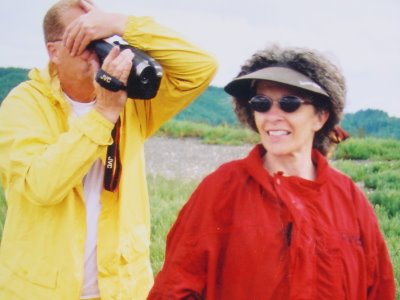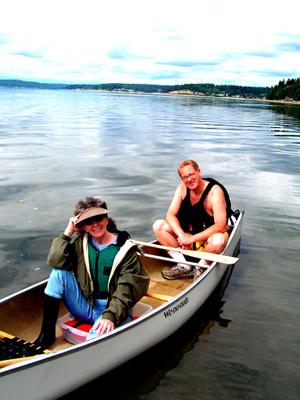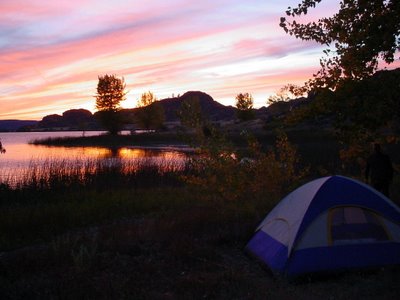 We've got our camping gear packed and ready to go, and we're heading over to Eastern Washington for some canoeing and hiking.
We've got our camping gear packed and ready to go, and we're heading over to Eastern Washington for some canoeing and hiking. It is my favorite area - sparce desert vegetation, exquisite vista, great hiking, and just great 'getaway experieces'. We've paddled Hutchinson Lake to Shriner Lake, both offering abundant wildlife. I especially enjoy filming the swallows at their cliffside nests.
We'll drive to the Columbia National Wildlife Refuge in the spectacular Columbia Basin. This area is a scenic mixture of rugged cliffs, canyons, lakes, and arid sagebrush grasslands.
The refuge's setting is the geological area known as the 'Channeled Scablands', an area formed when great glacial floods gouged through basalt layers, leaving distinctive canyons or "channels", rocky buttes, and cliffs.

The Pothole Reservoir nearby offers many little water courses great for canoeing. We both bring cameras, and while I film our canoe glides, George films wildlife - focusing on the migratory birds.
Washington state has an extensive wetland habitat restoration program in partnership with Ducks Unlimited, Washington Dept. of Fish and Wildlife, Natural Resource Conservation Service, Audubon, and the East Columbia Basin Irrigation District.
By opening up dense stands of cattail and bulrush, eliminating noxious weeds, replacing worn out water control structures, cleaning out water delivery channels, and properly manipulating water levels, wetland habitats are protected.
Serious planning to irrigate the Columbia Basin on a large scale began in 1918. The Columbia Basin Project was approved and construction of Grand Coulee Dam began in 1934. In 1951, the first irrigation water began flowing to Columbia Basin farmlands. Columbia Refuge was established in conjunction with the irrigation project in 1944 and has been actively managed since 1955.

With a reliable supply of abundant water, lakes appeared in former canyons and low spots throughout the refuge and surrounding areas. In many places on the refuge, additional lakes and ponds were created by damming spring and seepage flows. All the present refuge lakes are the result, directly or indirectly, of irrigation water.
Around the refuge, dryland wheat areas and many acres of sagebrush have been converted to a wide variety of irrigated crops. Many of these crops, particularly corn, provide abundant food for ducks and geese. The agricultural development, together with the numerous water areas, combine to provide ideal feeding and resting areas for thousands of migrating and wintering waterfowl.
This is the best time of the year to enjoy the Columbia Wildlife refuge - before the heat of summer, and before the crowds and tourists of summer. I've packed up the tent, the propane cookstove, our warm clothing and 'the bed' - there we just don't rough it. We take along deep foam mattresses, lots of thick comforters, a few homemade afghans, lots of pillows, and a big down comforter. We've learned that this is the only way to be truly comfortable in a tent, sleeping on the ground. Comfy and warm, and serenaded by the coyotes at night - now that is my idea of good camping.
